On October 30th, the “Belt and Road” and Energy Economy Cooperation Seminar was held in the Bianhai Building of Wuhan University. The seminar was co-sponsored by the Wuhan University China Institute of Boundary and Ocean Studies (CIBOS) and the Wuhan University Institute of “Belt and Road” Construction Research. About 20 experts and scholars from the National University of Singapore, Inha University of South Korea, University of Technology Sydney, Peking University, Wuhan University, South Central University for Nationalities, and Hubei University of Economics were invited to attend the seminar.
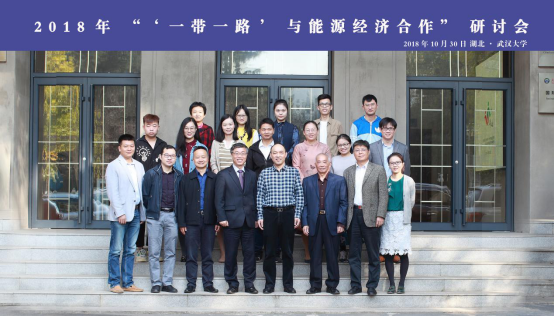
At the opening ceremony, Professor Yu Minyou, Dean of the CIBOS and Wuhan University Institute for International Studies, gave the welcome speech. He emphasized that energy and economic cooperation is an important part of the implementation of the “Belt and Road” Initiative. It not only helps to promote the “Belt and Road” strategy and builds a community of common destiny, but also achieves optimal energy allocation for countries along the “Belt and Road” and promotes cooperation and economic development. The seminar was held in the form of lectures and youth forums. The participants combined the theory and practice, discussed how to help the countries along the “Belt and Road” to improve energy efficiency, and put forward a series of reports with practical value. The main content is now organized as follows to readers.
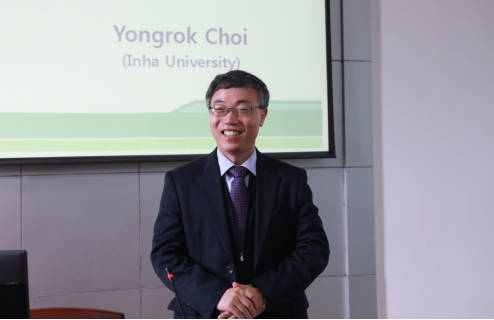
The theme of speech of Professor Choi Yong-Rok from the International Trade Department of Inha University is “Challenge for the new frontier of the One-Belt, One Road Initiative”. He first analyzed the economic benefits brought by the “Belt and Road” Initiative from the perspective of trade investment: in 2014-2017, China’s foreign direct investment reached $64.64 billion. China has also attracted investment from countries along the “Belt and Road”: from 2014 to 2017, the total investment of these countries in China reached $27.6 billion. From 2014 to 2017, the annual trade volume between China and the countries along the “Belt and Road” maintain at around $1 trillion, accounting for more than a quarter of China’s total volume of trade in goods. Professor Choi believes that the spirit of the Silk Road, which is "peaceful cooperation, openness and tolerance, mutual learning, and mutual benefit", reflects the Asian values, and helps to solve the challenges faced by the "Belt and Road" Initiative, such as the conflicts between China and other “Belt and Road” countries in issues relating to South China Sea, and the hostilities from other countries towards China. The search and establishment of Asian values and Asian models is a very complex process, in which the international cooperation is of great importance.
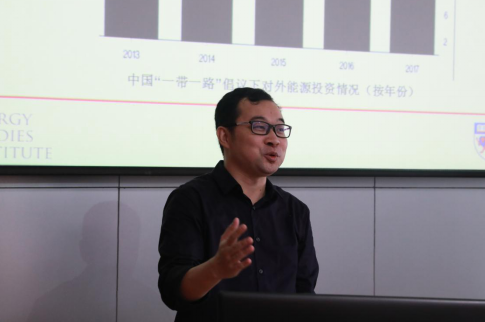
The theme of speech of Dr. Su Bin, Senior Research Fellow of Energy Studies Institute of National University of Singapore is “‘Belt and Road’ and energy economic cooperation”. He introduced investment and cooperation in China-Russia and China-Pakistan energy project, emphasizing the importance of energy connectivity and the healthy development of renewable energy. On October 18, 2018, in the “Belt and Road” Energy Ministers Meeting, Xi Jinping emphasized that energy cooperation is a key area in the implementation of “Belt and Road” Initiative. We are willing to strengthen cooperation in the energy field with other countries in the framework of the “Belt and Road” Initiative, to create favorable conditions for promoting common development, to promote global sustainable energy development, and to maintain global energy security. It is hoped that the guests will communicate with each other deeply and build consensus on major issues such as deepening international cooperation in energy and promoting global energy reform, establishing the “Belt and Road” energy partnership, and making contributions to the construction of a community of common destiny. In addition, Dr. Su briefly analyzed the recent articles relating to the issues of “Belt and Road” and energy in international academic journals, and shared various methods, perspectives and valuable conclusions of academic research in this field. Dr. Su believes that the research on the “Belt and Road” and energy cooperation can be carried out from the perspectives of macro level, micro level, implementation level, future level, method level, theoretical framework and case analysis.
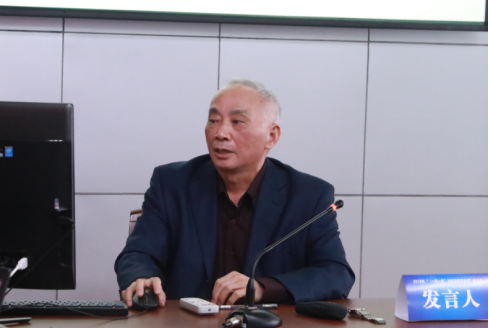
The theme of speech of Professor Zhou Maorong of the Wuhan University Institute of International Studies is “the content and prospects of the Agreement on trade and economic cooperation between the Eurasian Economic Union and the People’s Republic of China”. The Agreement on trade and economic cooperation between the Eurasian Economic Union and the People’s Republic of China is a product of the integration of the “Belt and Road” Initiative with the Eurasian Economic Union. Its content is mainly to promote trade facilitation, to focus on new trade issues to open up new areas of cooperation, to promote departmental cooperation and to build cooperation mechanisms. In respect of the economic integration of China and the Eurasian Economic Union, Professor Zhou gave three proposals: First, work with the Eurasian Economic Union and its member states to maximize the transformation of the Agreement into tangible cooperation results, let the facts to prove the level of economic and trade cooperation between the two sides. Second, learn from the experience of ASEAN, start from the low-level integration arrangement, gradually upgrade the degree of economic integration, and actively create chances to negotiate with member countries of Eurasian Economic Union on tariff reduction and liberalization of trade and investment, and strive to open a new process of regional cooperation, thus to lay the foundation for a future free trade zone. Third, strengthen research on the “Eurasian Economic Partnership” Initiative and promote the construction of a wider free trade zone.
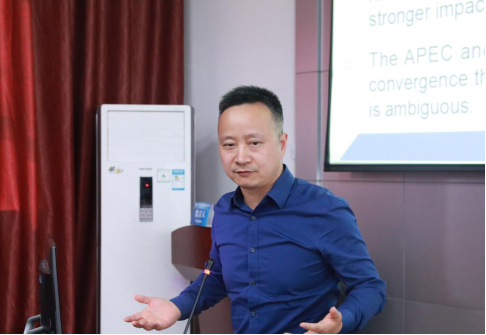
The theme of speech of Dr. Roc Shi, Principal Research Fellow at the Australia-China Relations Institute, University of Technology Sydney is “Will BRI Lead to Environmental Deterioration?” He built an economic data model to analyze the issue. The model demonstrated that China's share in the capacity cooperation is gradually increasing; certain divisions of labor in the capacity cooperation are transferring; the industry is hollowing out; and China's proportion of labor in the high-end market is low. He put forward many important points and conclusions: First, the “Belt and Road” Initiative does not necessarily lead to environmental changes. Second, development must be integrated into globalization, and to achieve industrialization in first place. Third, begin with the emancipation of mind and system, establish the ownership consciousness and responsibilities towards member countries of the “Belt and Road” Initiative. As for the cooperative developing countries, we need to go back and forth, and should not act straightly for the consideration of efficiency.
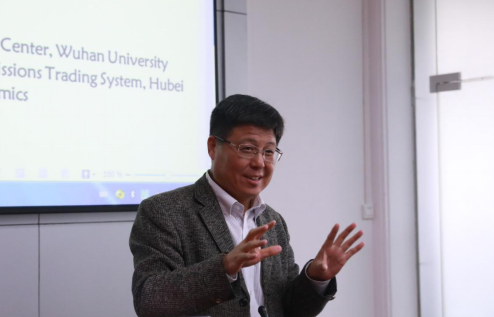
The theme of speech of Professor Qi Shaozhou from the Wuhan University School of Economics and Management is “Is energy efficiency of BRI countries catching up or falling behind? Evidence from a panel quantile regression approach.” He used the TFEE model to analyze the growth or backwardness of energy efficiency in the countries along the “Belt and Road”. He found that the overall data of 60 countries in the study is convergent, and the speed of convergence increases with the increase of TFEE growth rate; when TFEE growth rate is low or negative, it does not show convergence; when TFEE growth rate is high, the rate of convergence is higher in high-income countries than in low-income countries. He emphasized that the research and innovation capabilities of the “Belt and Road” countries, especially the absorption capacity, need to be improved. In this regard, Professor Qi believes that if the economic development of countries does not cross a certain threshold, the energy efficiency of them is difficult to improve; we should focus on the growth rate of total factor energy efficiency; backward countries along the “Belt and Road” should improve absorptive capacity and research and innovation capabilities through trade investment.
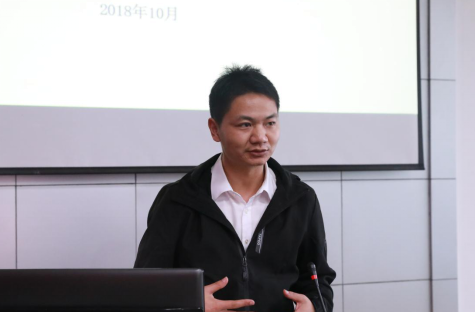
The theme of the speech of Qin Fei, post-doctoral research fellow of Peking University National School of Development is “Can the ‘Belt and Road’ initiative improves the performance of enterprises?” He mentioned that it was the 40th anniversary of the reform and opening up and the 5th year of the “Belt and Road” Initiative, so he chose this topic to observe the effectiveness of the policy. His theoretical basis is the basis of quasi-experiment, DID policy experiment, and propensity matching score method (PSM). The data is mainly from wind database. Finally, through model analysis, he believes that the “Belt and Road” Initiative has significantly improved the performance of companies.
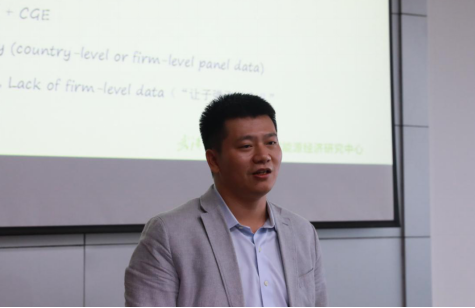
The theme of speech of Associate Professor Cui Jingbo of the Wuhan University School of Economics and Management is “‘Belt and Road’ countries' climate policy and low-carbon technology innovation.” He pointed out that research areas related to this issue include industrial policy, trade policy and energy climate policy, and relevant methodologies include theoretical models and empirical research strategies. He also mentioned the EU's low-carbon innovation model, hoping to provide a reference for the low-carbon development of the “Belt and Road” countries. In addition, Associate Professor Cui Jingbo also raised some potential issues, such as the relationship between climate policy and low-carbon innovation, green economy and low-carbon innovation, international cooperation and low-carbon innovation, regional carbon emission reduction and low-carbon innovation, which deserves our further thinking and research.

The theme of speech of Dr. Mao Haiou, post-doctoral research fellow at the CIBOS is “Does the ‘Belt and Road’ Initiative Hurt Node Countries?” From the perspective of trade, she studies the impact of the “Belt and Road" Initiative on countries along the route. Dr. Mao has proposed that so far about $274 billion have been invested in the context of “Belt and Road” Initiative, but the evaluation of the Initiative in the international community is polarized. On the one hand, it is believed that it will promote the development of countries along the route. On the other hand, some people also criticized it as a political strategy. After collecting data and conducting an empirical analysis, she found that the “Belt and Road” Initiative promoted the en route countries’ exports to China, and this effect has increased slightly over time. At the same time, this promotion effect has regional heterogeneity. The “Belt and Road” Initiative has relatively small positive impact on North Africa, Central Asia and East Asian economies, and has a relatively larger positive effect on other regions.
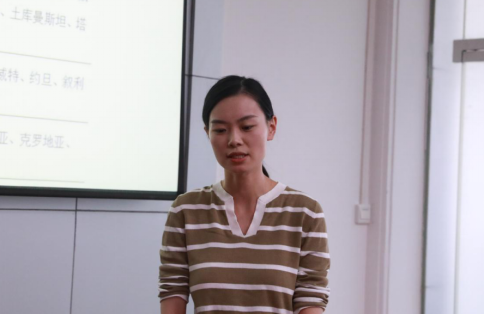
The theme of speech of Dr Cheng Si, lecturer at the School of Low-Carbon Economics of Hubei University of Economics is “Research on China's Direct Investment Potential and Influencing Factors along the ‘Belt and Road’ from the Perspective of Carbon Emissions”. She believes that investment and trade cooperation is the key content of the “Belt and Road” construction, and is also the practical need in jointly building a green “Belt and Road”. In the official data of the Ministry of Commerce of China and third-party data, she selected the “China’s Global Investment Tracking” as source of data and analyzed the factors affecting China's foreign direct investment, such as market seeking, resource seeking, efficiency seeking, and strategic resource seeking, etc. She used a time-dependent stochastic frontier model of gravity to study the potential and influencing factors China's investment of countries along the route, and found that China's direct investment potential in the overall level, high-carbon-intensive industries and low-carbon-intensive industries along the “Belt and Road” continues is rising. Bilateral investment agreements, financial costs and trade costs are important factors affecting China’s investment potential in countries along the route.
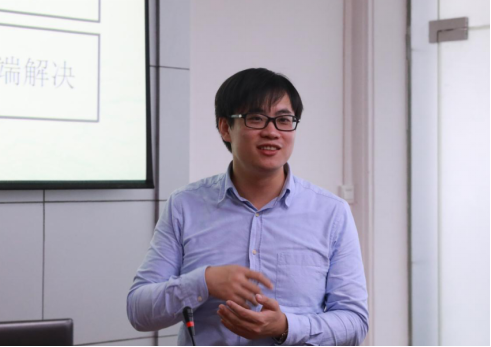
The theme of speech of Dr Tan Xiujie, lecturer at the Wuhan University Institute of International Studies, is “The Mechanism and Empirical Study of Investment Agreement: Analysis based on the heterogeneity of investment agreements”. In 2015, China's OFDI (China's foreign direct investment) flow ranked second in the world. After the implementation of the “Belt and Road” Initiative, China's foreign direct investment will surely have a greater development. Dr. Tan Xiujie proposed that the contents of bilateral investment agreements mainly include investment definition, access and treatment standards, political risk guarantee and dispute settlement. He first proposed two hypotheses. One is that BIT (the “Belt and Road” Initiative) is beneficial to OFDI, and the other is that BIT has a substitution effect on the host countries’ system. After empirical analysis, he believes that both assumptions are true, but the substitution effect of the dispute settlement mechanism on the host country system is not obvious.

The theme of speech of Dr Xu Jia from Wuhan University School of Economics and Management is “Trade openness and green total factor productivity of countries along the ‘Belt and Road’”. First, she asked whether there is a green technology spillover threshold based on factors such as economic development, infrastructure, financial development and institutional quality. Later, through empirical analysis, she believes that the above four variables have significant threshold effects on the green technology spillovers of trade openness of countries along the “Belt and Road”. Moreover, the adoption of four thresholds in different countries is different. Compared with export trade, import trade is more conducive to promoting the development of green technology in relevant countries.
(Rewritten by Yang Jingjie)
(Edited by Fu Shanshan)
